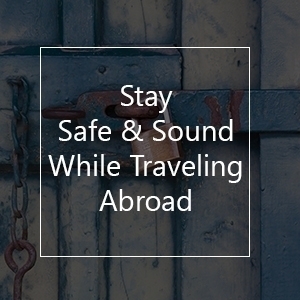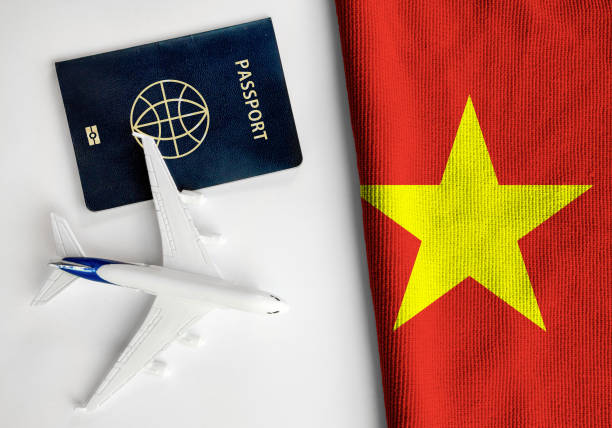Staying Connected with Loved Ones While Traveling
Traveling to new destinations and exploring the world is an exciting adventure. However, it’s important to stay connected with loved ones back home during your travels. In today’s digital age, there are numerous ways to maintain communication and share your experiences with family and friends. In this guide, we will explore practical tips and strategies for staying connected while traveling. From utilizing technology and social media platforms to planning regular check-ins and embracing traditional communication methods, you can bridge the distance and keep your loved ones updated on your adventures.
Communication Tools and Apps
Communication tools and apps play a crucial role in staying connected with loved ones while traveling. Here’s an explanation of how these tools work and how you can make the most of them:
- Messaging Apps: Messaging apps like WhatsApp, Telegram, or Facebook Messenger are widely used for staying in touch with family and friends. These apps allow you to send text messages, photos, videos, and even voice messages. They operate over an internet connection, whether Wi-Fi or mobile data, making them cost-effective options for international communication. You can create individual or group chats, making it easy to stay connected with multiple people simultaneously.
- Video Calling Apps: Video calling apps such as Skype, FaceTime, or Zoom enable real-time face-to-face conversations with your loved ones. These apps utilize your device’s camera and microphone to establish a video connection, allowing you to see and hear each other. Video calls provide a more personal and intimate form of communication, especially when you want to share special moments or have longer conversations.
- Voice Calling Apps: Voice calling apps like WhatsApp, Skype, or Viber allow you to make voice calls to any contact, even if they are not using the same app. These apps use internet connectivity to transmit voice calls, making international calls more affordable compared to traditional phone calls. They also offer features like call recording, call forwarding, and voicemail.
- Social Media Platforms: Social media platforms such as Facebook, Instagram, and Twitter offer various ways to stay connected and share updates with your loved ones. You can post photos, videos, and status updates to keep them informed about your travel adventures. These platforms also provide a space for your friends and family to comment, like, and engage with your posts, fostering interactions and discussions.
- Location Sharing: Some messaging and social media apps have location-sharing features that allow you to share your current whereabouts with specific contacts. This feature can be helpful for letting your loved ones know that you’re safe and providing them with real-time updates on your travel location.
- Translation Apps: Translation apps like Google Translate or Microsoft Translator can be invaluable when communicating with locals who speak a different language. These apps can help you overcome language barriers and facilitate conversations. Simply type or speak a phrase in your language, and the app will translate it into the desired language.
- Travel-specific Apps: There are numerous travel-specific apps that can enhance your communication experience while traveling. These apps provide information about local attractions, transportation options, language guides, and more. Some examples include TripIt for organizing travel itineraries, Google Maps for navigation, and Duolingo for language learning.
Local SIM Cards and Data Plans
Local SIM cards and data plans are essential tools for staying connected while traveling. Here’s an explanation of how they work and how you can make use of them:
- Local SIM Cards: A SIM card is a small chip that you insert into your mobile device to connect to a cellular network. When you travel to a foreign country, you can purchase a local SIM card that is compatible with the local network providers. This allows you to have a local phone number and access to mobile services in that specific country.
- Purchasing a Local SIM Card: You can typically purchase a local SIM card at airports, convenience stores, mobile network shops, or kiosks. They come in various types and sizes (standard, micro, or nano), so ensure that you have the appropriate size for your device. You may need to present your passport or provide identification information to register the SIM card.
- Activating the SIM Card: Once you have the local SIM card, you’ll need to activate it by inserting it into your phone or other mobile devices. Follow the instructions provided by the network provider to activate the card. This may involve dialing a specific number or accessing an online portal. Activation usually requires topping up the SIM card with credit.
- Benefits of Local SIM Cards: By using a local SIM card, you can enjoy local rates for calls, text messages, and mobile data. This can be significantly cheaper compared to international roaming charges imposed by your home network. Having a local number also allows you to receive calls and messages from local contacts easily.
- Data Plans: Along with purchasing a local SIM card, you can also choose a data plan that suits your needs. Network providers offer various options, such as prepaid or postpaid plans, with different data allowances and validity periods. Some plans may include unlimited local calls and texts as well.
- Accessing Mobile Data: With a local SIM card and an active data plan, you can access the internet and use mobile data services while traveling. This enables you to stay connected to messaging apps, social media platforms, email, maps, and other online services. You can browse the web, upload photos, and even make video calls without relying solely on Wi-Fi connections.
- Topping Up Credit: Prepaid SIM cards require topping up credit to continue using voice, SMS, and data services. This can be done at designated top-up locations, online portals, or through mobile apps provided by the network operator. Topping up credit ensures that you have sufficient balance to make calls, send messages, and use data.
- Coverage and Network Compatibility: Before purchasing a local SIM card, research the network coverage and quality of the network providers in the area you plan to visit. Check if your device is compatible with the local network’s technology (e.g., GSM, CDMA) and the available frequency bands. This ensures that your device will work properly with the local SIM card.
Social Media Updates
Utilize social media platforms like Facebook, Instagram, or Twitter to share updates and photos of your travels with friends and family. These platforms provide a convenient way to keep everyone informed about your adventures in real-time. However, be mindful of your privacy settings and avoid oversharing personal information.
Regular Check-Ins
Set a routine for regular check-ins with your loved ones. Establish a specific time or day to connect with them, whether through a phone call, video call, or messaging. This helps maintain a sense of consistency and reassurance for both you and your loved ones.
Email and Online Journals
Write longer updates and reflections on your travels through email or by keeping an online travel journal or blog. Share these writings with your loved ones, allowing them to be part of your journey in a more detailed and personal way. This also provides an opportunity for deeper conversations and reflections.
Snail Mail and Postcards
Embrace traditional methods of communication by sending snail mail or postcards to your loved ones. This adds a personal touch to your connection and allows them to experience the joy of receiving physical mail from abroad. Share your adventures, thoughts, and experiences on paper, making it a cherished keepsake for both you and the recipient.
Virtual Tours and Shared Experiences
Invite your loved ones to join you virtually on your travels. Utilize video calls or live streaming to share real-time experiences. Take them on virtual tours of the places you visit, share local cuisine, or engage in virtual activities together. This creates a sense of shared experiences despite the physical distance.
Offline Time and Presence
While it’s important to stay connected, remember to be present and enjoy your travel experiences. Allocate designated “offline” time where you disconnect from technology and immerse yourself fully in the destination. This allows you to appreciate the moment and create lasting memories.
Conclusion
Staying connected with loved ones while traveling is essential for maintaining relationships and sharing your adventures. Utilizing communication tools and apps, obtaining local SIM cards or data plans, sharing updates on social media, planning regular check-ins, embracing traditional methods like snail mail, and inviting loved ones to join you virtually are effective ways to bridge the distance. However, it’s equally important to strike a balance and enjoy your travel experiences without constant digital distractions.






